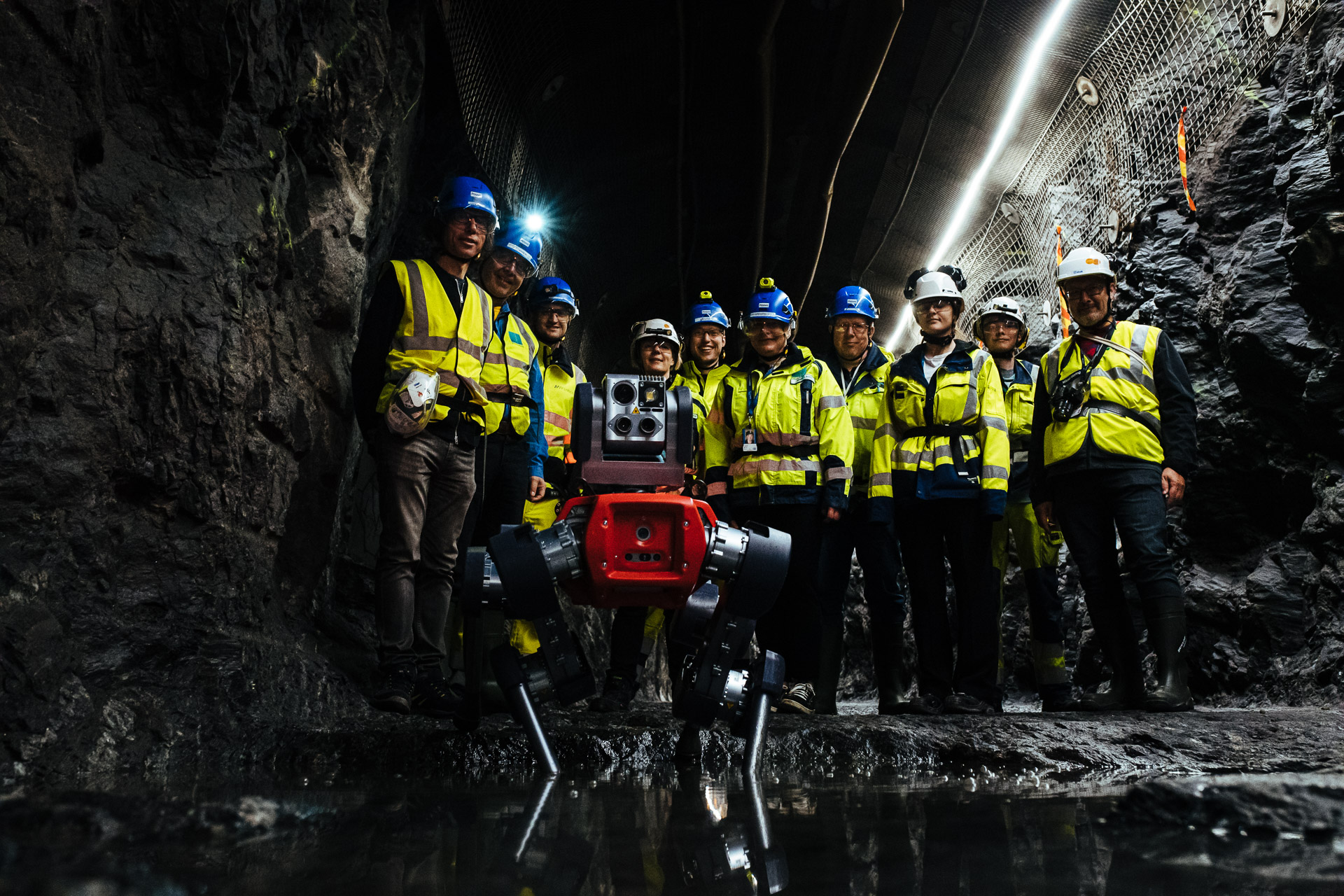 Swiss company ANYbotics has been testing the performance of its four-legged ANYmal robot in Finland’s Onkalo underground used fuel repository near Olkiluoto. Researchers at the Swiss University of Technology (EHT), built the first four-legged robot in 2009 and ANYbotics was established to commercialise this technology in particular its “ANYmal” robot. Although generally referred to as a robot “dog”, the robot used in the Olkiluoto test was called “Donkey”.
Swiss company ANYbotics has been testing the performance of its four-legged ANYmal robot in Finland’s Onkalo underground used fuel repository near Olkiluoto. Researchers at the Swiss University of Technology (EHT), built the first four-legged robot in 2009 and ANYbotics was established to commercialise this technology in particular its “ANYmal” robot. Although generally referred to as a robot “dog”, the robot used in the Olkiluoto test was called “Donkey”.
The test was jointly organised by the European Nuclear Energy Organisation (Euratom) and Finnish radioactive waste management company Posiva Oy. Euratom and Posive are interested in the use of robots that can access places unsafe for human operators, for example for safeguards inspections in high-radiation states or toxic environments. The robot is also not dependent on working hours and so can be programmed to do undertake inspections at night.
Moreover, a robot would also be available in an emergency at shorter notice than the time needed to call an inspector. It can be equipped for various tasks with various devices, such as optical and thermal cameras, microphones, gas or radiation detectors.
The Swiss robot uses laser sensors as well as cameras to observe the environment and is able to identify its own location very accurately. By combining observation with spatial data (such as mapping or area scanning), the robot can plan its navigation route independently if necessary. ANYmal is designed for autonomous action in challenging environments and has previously been tested in mountainous terrain. However, ONKALO’s tunnels provided a unique framework to assess the robot’s capability.
Using battery power, the robot walked through the ONKALO tunnels for about 1.5 hours. The purpose was to test the distance it could travel in ONKALO-type conditions on a single charge and also to see whether there were parts of the terrain that presented obstacles to its progress. The route was first planned using the robot’s scanning and mapping functions. It progressed autonomously on the scanned route observed by the research team but was always available for remote control, for example in an emergency. Various security functions were programmed into the robot. For example, it circulated the obstacles on the route from a certain safe distance and stopped when someone entered its safety zone.
ANYmal is 93cm long, 53cm wide and 89cm tall and weighs about 50kg. It is fully protected against moisture and dust. It has a walking speed of 1.3 metres per second and is able to cross a gap 30cm wide. It does not require light for autonomous action.
Image: The ANYmal robot being tested at Finland’s Onkalo underground used fuel repository near Olkiluoto (courtesy of Tapani Karjanlahti / Posiva)



